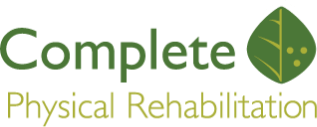Stiffness and discomfort don’t have to be a part of our daily lives — and yet many people assume that they’re doomed to suffer from arthritis pain. If you’ve been losing more and more of your mobility and productivity due to chronic joint inflammation, you may be disappointed by the usefulness of painkilling drugs or even alarmed by the potential dangers of such drugs. Fortunately, you have a safer, more effective path toward arthritis pain management: physical therapy.
How and Why Arthritis Causes Pain and Stiffness
Arthritis includes an entire family of painful joint conditions. For some individuals, it may take the form of painful gout in a toe joint; in others, it can strike due to a bacterial joint infection. The majority of arthritis suffers, however, suffer from one of two agonizing conditions:
- Osteoarthritis – This most common form of arthritis is usually a natural consequence of a lifetime of joint motion, coupled with certain changes that take place during aging. Healthy joints contain not only a lubricating fluid to keep the bone ends moving smoothly, but also a layer of cartilage that acts as a shock absorber and anti-friction component. Over time, however, the production of lubricating fluid can start to dry up, while the cartilage becomes thinner and more worn until it finally breaks down completely. This leaves you with pain, stiffness, and inflammation that usually feels worse whenever you try to move or put weight on the joint.
- Rheumatoid arthritis – This form of arthritis is caused by an auto-immune disease or dysfunction. The same protective mechanisms that normally fight off disease germs decide to turn on your joints, treating them as the enemy and attacking them. This results in painful inflammation that may come and go, leaving joint swelling and deformity in its wake.
Many arthritis sufferers naturally turn to medication in the hopes that it will ease their symptoms. NSAIDs, steroids and (and in the most severe cases) opioid drugs may produce such relief, but only temporarily. These drugs can’t address the physical problems that actually cause your symptoms; they can only mute the symptoms themselves. What’s more, painkilling and anti-inflammatory drugs can pose significant risks if they’re used constantly. NSAIDs can damage the internal organs, while steroids may contribute to everything from cataracts to osteoporosis. Opioids can be extremely dangerous, not only because of their addictive properties but also because overdoses can (and often do) prove fatal.
Our Physical Therapist Can Develop Customized Pain Management Plans
If you want an arthritis pain management plan that improves your health without presenting you with the dangers of drugs, turn to physical therapy. Our physical therapist can examine your joints to see how advanced your arthritis has become and how it may be affecting your stance, gait or mobility. You’ll then receive a customized pain management plan that may include:
- Exercise – Exercise can aid arthritis sufferers by boosting circulation, easing inflammation, strengthening joint tissues and increasing range of motion. It can help you improve your balance, if that’s become a problem for you.
- Physiotherapy techniques – You may benefit from massage therapy, cold/heat therapy or laser therapy.
- Corrective devices – Your physical therapist can recommend specialized insoles and train you in the use of devices such as walkers or canes.
- Lifestyle guidance – Your physical therapist can recommend specific changes to your everyday ergonomics or lifestyle that will ease your pain.
Don’t just numb your arthritis pain — manage it the smart, safe, effective way. Contact Complete Physical Rehab!

